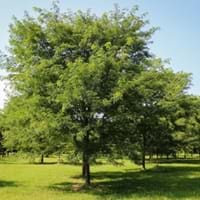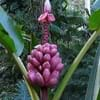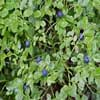Life Span
Annual
Perennial
Type
Trees
Fruit, Palm or Cycad, Tree
Origin
China, Korea
Not Available
Types
Sophora japonica
Not Available
Habitat
Humid climates, Loamy soils, Low annual rainfall regions, Wet ground, Woods
Humid climates, sandy seeps, shores, tropical environments
USDA Hardiness Zone
5-9
5-12
Sunset Zone
2a, 2b, 3a, 3b, 4, 5, 6, 7, 8, 9, 10, 11, 12, 13, 14, 15, 16, 17, 18, 19, 20, 21, 22, 23, 24
H2
Habit
Oval or Rounded
Upright/Erect
Flower Color
White, Light Green
Yellow Brown
Flower Color Modifier
Bicolor
Bicolor
Leaf Color in Spring
Dark Green
Green
Leaf Color in Summer
Dark Green
Golden Green
Leaf Color in Fall
Yellow, Dark Green
Green
Leaf Color in Winter
Not Available
Green
Leaf Shape
Elliptic
Pinnate
Plant Season
Spring, Summer, Fall, Winter
All year
Sunlight
Full Sun
Full Sun, Part sun
Type of Soil
Clay, Loam, Sand
Loam, Sand
The pH of Soil
Acidic, Neutral, Alkaline
Neutral, Slightly Acidic, Slightly Alkaline
Soil Drainage
Average
Well drained
Bloom Time
Summer
Not Available
Tolerances
Pollution, Drought, Soil Compaction
Salt
Where to Plant?
Ground
Ground
How to Plant?
Seedlings, Transplanting
Seedlings, Transplanting
Plant Maintenance
Medium
Medium
Watering Requirements
occasional watering once established, Requires watering in the growing season
Reduce watering during fall, Water daily during growing season, Water frequently while growing
In Summer
Less Watering
Lots of watering
In Spring
Less Watering
Moderate
In Winter
Drought Tolerant
Average Water
Soil pH
Acidic, Neutral, Alkaline
Neutral, Slightly Acidic, Slightly Alkaline
Soil Type
Clay, Loam, Sand
Loam, Sand
Soil Drainage Capacity
Average
Well drained
Sun Exposure
Full Sun
Full Sun, Part sun
Pruning
Prune when young, Remove dead branches
Cut limbs, Remove dead branches
Fertilizers
All-Purpose Liquid Fertilizer
Nitrogen, Phosphorous, Potassium, slow-release fertilizers
Pests and Diseases
Leaf spot, Red blotch, Woodpecker feeding
Bud rot, Cadang-cadang, Coconut bug, Coconut foliar decay, Coconut scale, Ganoderma butt rot, Gray leaf blight, Lethal bole rot, Lethal yellowing, Mealybugs, nutfall, Red ring nematode, Stem bleeding disease
Plant Tolerance
Drought, Dry soil, Soil Compaction
Salt
Flower Petal Number
Single
Single
Foliage Texture
Medium
Fine
Foliage Sheen
Matte
Matte
Attracts
Bees, Hummingbirds, Woodpeckers
Not Available
Allergy
Eczema, Nausea, Swelling in the face
Abdominal pain, Anaphylaxis, cramps, Mouth itching, Nasal Congestion, Nausea, Runny nose, Skin irritation, Throat itching
Aesthetic Uses
Bouquets, Landscape Designing, Showy Purposes
Beautification, Landscape Designing, Showy Purposes
Beauty Benefits
Nourishes scalp, Restores Hair Colour, Stops hair loss
Good for skin, Good for the Scalp, Hair Conditioner, Heals Damaged Hair, Makes Hair Silkier, Making cosmetics, Removes dandruff, Restores Hair Colour
Edible Uses
Sometimes
Yes
Environmental Uses
Air purification, Erosion control, Forms dense stands, Shadow Tree
Air purification, No fertilizer, pesticides, or herbicides needed, Wildlife
Medicinal Uses
Diuretic, Fever, Muscle Pain, Vomiting
Antibacterial, anti-cancer, Antifungal, Antioxidants, Antiviral, Digestion problems, Heart problems, Immunity, Skin Disorders, Weight loss
Part of Plant Used
Bark, Leaves
Whole plant
Other Uses
Used as a laxative, Used as firewood, Used as Ornamental plant, Used in construction
Air freshner, Animal Feed, Application in Furniture, Application in Handicrafts, For making oil for cosmetics, Oil is used for aromatherapy, Traditional medicine, Used as a nutritious food item, Used as a vegetable oil
Used As Indoor Plant
No
No
Used As Outdoor Plant
Yes
Yes
Garden Design
Shade Trees, Street Trees, Topiary / Bonsai / Espalier
Edible, Feature Plant, Fruit Tree, Landscape, Tropical
Botanical Name
SOPHORA japonica
Cocos nucifera
Common Name
Chinese Scholartree, Japanese Pagoda
Coconut Palm, coconut tree
In Hindi
Gobur champ
नारियल का पेड़
In German
Japanischer Schnurbaum
Kokospalme
In French
Styphnolobium japonicum
Cocotier
In Spanish
Styphnolobium japonicum
El cocotero
In Greek
Styphnolobium japonicum
καρύδας δέντρο
In Portuguese
Styphnolobium japonicum
Coqueiro
In Polish
Perełkowiec japoński
Drzewo kokosowe
In Latin
Styphnolobium japonicum
dolor ligno
Phylum
Angiosperms
Magnoliophyta
Class
Magnoliopsida
Liliopsida
Family
Fabaceae
Aceraceae
Genus
Styphnolobium
Cocos
Clade
Angiosperms, Eudicots, Rosids
Angiosperms, Commelinids, Monocots
Subfamily
Faboideae
Arecoideae
Number of Species
Not Available
Not Available
Importance of Japanese Pagoda and Coconut Tree
Want to have the most appropriate plant for your garden? You might want to know the importance of Japanese Pagoda and Coconut Tree. Basically, these two plants vary in many aspects. Compare Japanese Pagoda and Coconut Tree as they differ in many characteristics such as their life, care, benefits, facts, etc. Every gardener must at least have the slightest clue about the plants he wants to plant in his garden. Compare their benefits, which differ in many ways like facts and uses. The medicinal use of Japanese Pagoda is Diuretic, Fever, Muscle Pain and Vomiting whereas of Coconut Tree is Antibacterial, anti-cancer, Antifungal, Antioxidants, Antiviral, Digestion problems, Heart problems, Immunity, Skin Disorders and Weight loss. Japanese Pagoda has beauty benefits as follows: Nourishes scalp, Restores Hair Colour and Stops hair loss while Coconut Tree has beauty benefits as follows: Nourishes scalp, Restores Hair Colour and Stops hair loss.
Compare Facts of Japanese Pagoda vs Coconut Tree
How to choose the best garden plant for your garden depending upon its facts? Here garden plant comparison will help you to solve this query. Compare the facts of Japanese Pagoda vs Coconut Tree and know which one to choose. As garden plants have benefits and other uses, allergy is also a major drawback of plants for some people. Allergic reactions of Japanese Pagoda are Eczema, Nausea and Swelling in the face whereas of Coconut Tree have Abdominal pain, Anaphylaxis, cramps, Mouth itching, Nasal Congestion, Nausea, Runny nose, Skin irritation and Throat itching respectively. Having a fruit bearing plant in your garden can be a plus point of your garden. Japanese Pagoda has no showy fruits and Coconut Tree has showy fruits. Also Japanese Pagoda is not flowering and Coconut Tree is flowering. You can compare Japanese Pagoda and Coconut Tree facts and facts of other plants too.





